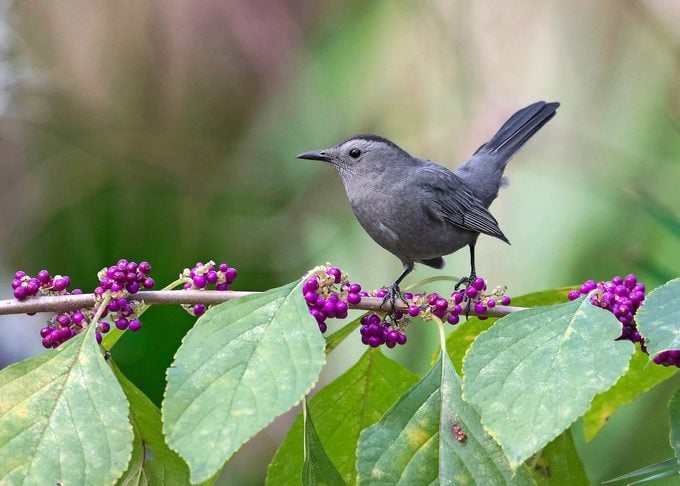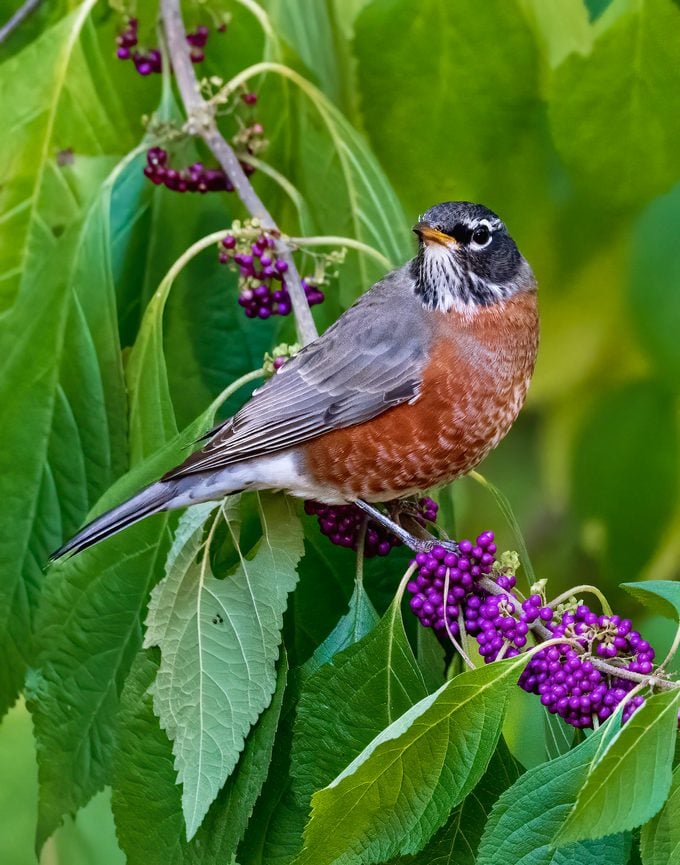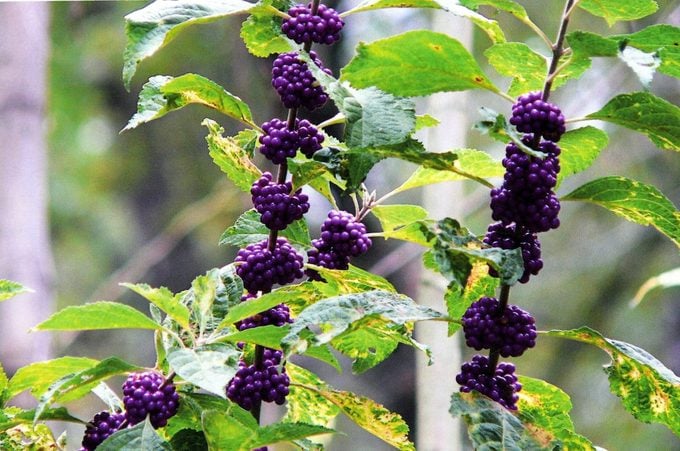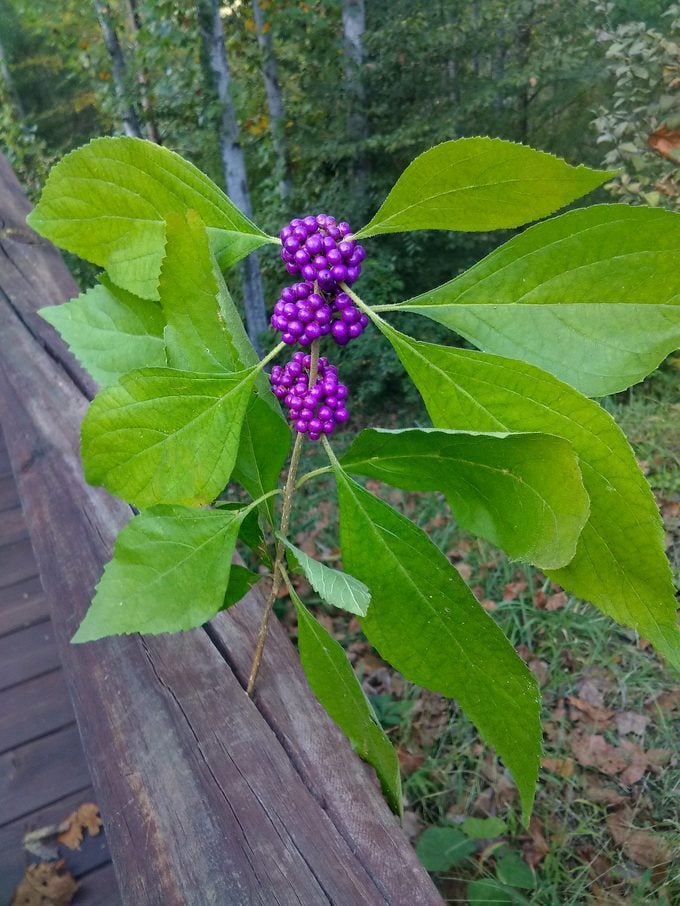Native Shrubs for Birds: American Beautyberry Bush
Updated: Jul. 13, 2023
American beautyberry bush is a versatile, easy-to-grow native shrub that birds love. Plant it in zones 6 to 10 and enjoy flowers and berries.
I never tire of recommending American beautyberry bush (Callicarpa americana) for southeastern native gardens—it’s the shrub that keeps on giving. In the spring, this terrific native shrub has delicate pink flowers, which yield clusters of brilliant purple berries in the late summer and fall.
Discover the best fall shrubs for your garden.
American Beautyberry Bush Care

This is a popular shrub with gardeners, because it’s very easy to grow and nearly every native plant nursery carries it. It tolerates full sun and full shade, and grows quickly in dry and wet soils alike. I have yet to learn of an environment in zones 6 to 10 where American beautyberry bush doesn’t work. In a wilder landscape, you can leave these bushes to grow naturally to a fairly leggy tall stature topping out around 15 to 20 feet. In a smaller or more manicured landscape, prune them heavily in late winter to encourage bushier growth.
American beautyberries are easily recognized in autumn. Bright purple berries that birds adore appear in clusters, and the leaves start to turn yellow and orange.
American beautyberry bush flowers and the subsequent berries grow at the junction where leaves meet stem. The blooms are not particularly fragrant or showy, and don’t seem to be be a big nectar draw like some others, but they’re very pretty up close. The berries persist throughout the winter, even when the leaves are gone, providing food for birds and a source of color in the winter landscape.
Check out more berry trees and shrubs that birds love.
Facts About American Beautyberry Bush

- The leaves of the plant, when crushed, yield oils that serve as a natural insect repellent to repel mosquitoes.
- The berries are edible, although fairly bland. Some say beautyberry jelly is delicious, though I have never tried any.
- A white-berried cultivar (C. Americana var. lactea) is available at some native plant nurseries.
Grow a black chokeberry shrub for berry-loving birds.
Ask the Experts: Beautyberry Bushes

“Can you identify this shrub (above) I saw in northwest Arkansas last fall? It was about 5 feet tall and growing near a stream,” asks Birds & Blooms reader Debi Wadel of Richards, Missouri.
Horticultural expert Melinda Myers: This eye-catching shrub is beautyberry (Callicarpa). The American beautyberry (Zones 6 to 11) is native in most of the southeastern U.S., Mexico and the West Indies. Japanese beautyberry is often used in landscapes and is hardy in Zones 5 to 8. Both prefer full sun to light shade and well-draining soil. The pink or white flowers appear in summer and are followed by beautiful violet-purple (almost metallic) berries.
Grow a Berry Heavy Gold winterberry bush for beauty and the birds.

“I found this mystery plant (above) deep in the woods. What could it be?” asks Jim Abe of Union Mills, North Carolina.
Melinda: The eye-catching, colorful fruit inspired this plant’s common name: American beautyberry. It’s native from southwest Maryland to North Carolina and Arkansas, then south to Mexico and the Caribbean. Beautyberry prefers full sun, is drought-tolerant once established and grows to 8 feet tall. It’s hardy in Zones 6 to 11. Lavender-pink flowers appear in the summer, followed by vibrant purple fruit. It’s related to Japanese and purple beautyberries, which you can also find at nurseries.
Next, check out 14 ways to create a bird-friendly garden and yard.
